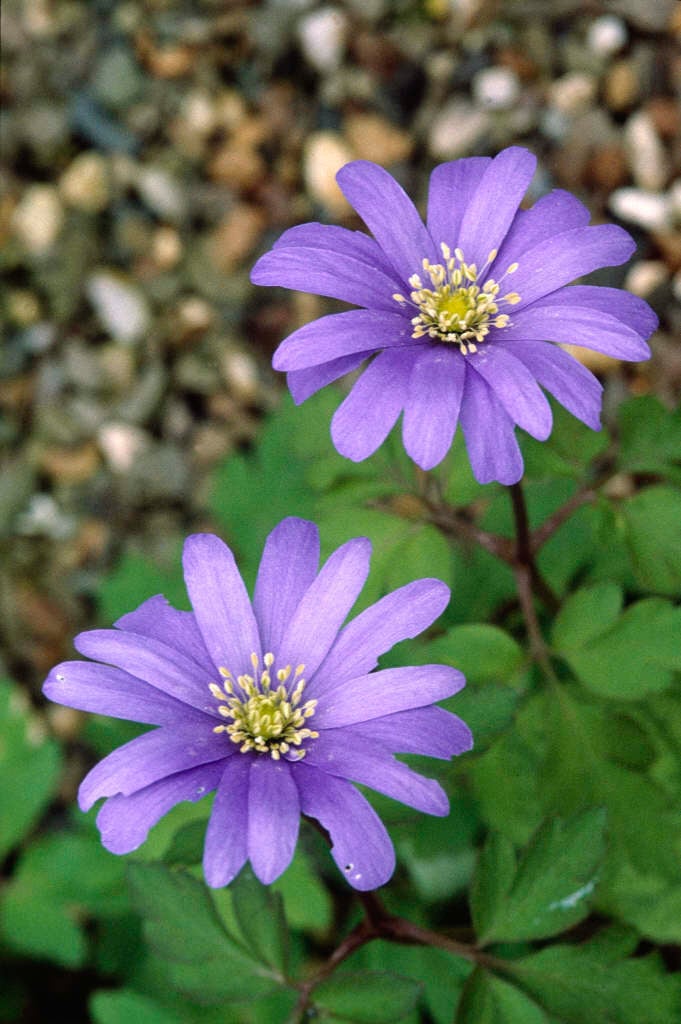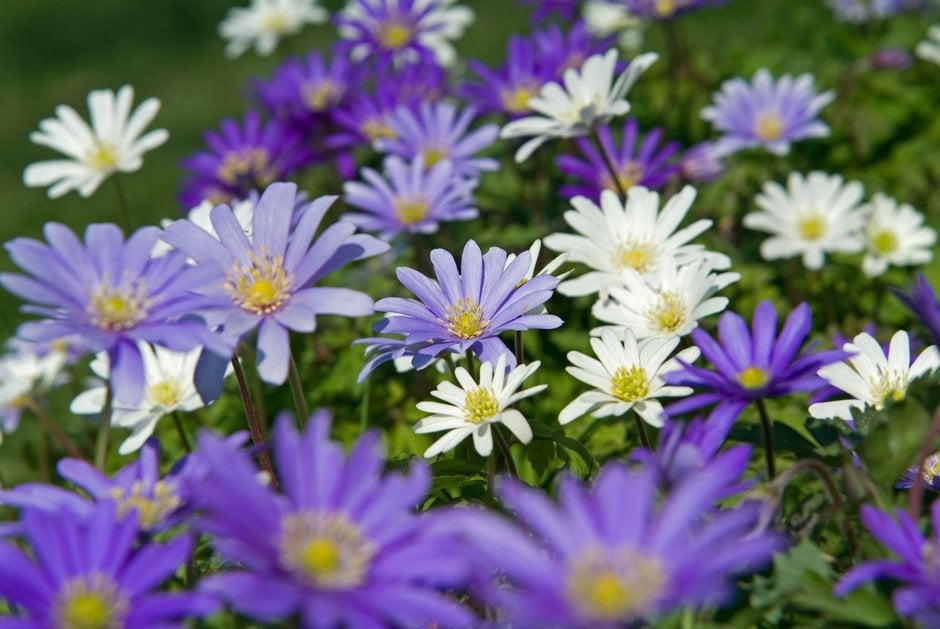Anemone apennina
blue anemone
A rhizomatous perennial to 20cm tall; leaves divided into three toothed and lobed segments. Flowers solitary in early spring, to 3.5cm wide, with 10-15 narrowly oblong blue petals, above a whorl of three small stem leaves
Size
Ultimate height
0.1–0.5 metresTime to ultimate height
2–5 yearsUltimate spread
0.1–0.5 metresGrowing conditions
Moisture
Moist but well–drainedpH
Acid, Alkaline, NeutralColour & scent
| Stem | Flower | Foliage | Fruit | |
| Spring | Blue | Green | ||
|---|---|---|---|---|
| Summer | ||||
| Autumn | ||||
| Winter |
Position
- Full sun
- Partial shade
Aspect
South–facing or West–facing or East–facing or North–facing
Exposure
Sheltered Hardiness
H6Botanical details
- Family
- Ranunculaceae
- Native to GB / Ireland
- No
- Foliage
- Deciduous
- Habit
- Matforming
- Potentially harmful
- Contact with the sap may irritate skin. Wear gloves and other protective equipment when handling
- Genus
Anemone are herbaceous perennials with fibrous, rhizomatous or tuberous rootstocks, palmately lobed leaves and saucer-shaped, usually 5-petalled flowers
- Name status
Correct
- Plant range
- S Europe
How to grow
Cultivation
Grow in moist but well-drained humus-rich soil in sun or part shade. Drier conditions are tolerated in summer when dormant. Ideal for naturalising in a variety of situations.
Propagation
Propagate by seed sown thinly as soon as they are ripe. Divide when dormant or as the leaves die down. Cut rhizomes into sections with at least one bud and replant immediately before they dry out.
Suggested planting locations and garden types
- Cottage and informal garden
- Patio and container plants
- Rock garden
- Low Maintenance
- Banks and slopes
- Flower borders and beds
- Ground cover
- Underplanting of roses and shrubs
- Garden edging
Pruning
No pruning required
Pests
May be susceptible to caterpillars, slugs and leaf eelworms
Diseases
Leaf spot and powdery mildews can be problematic
Get involved
The Royal Horticultural Society is the UK’s leading gardening charity. We aim to enrich everyone’s life through plants, and make the UK a greener and more beautiful place.

